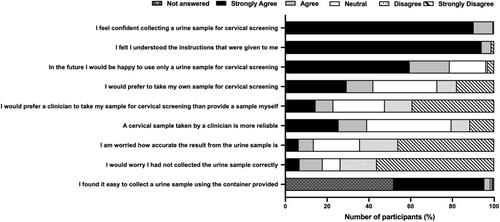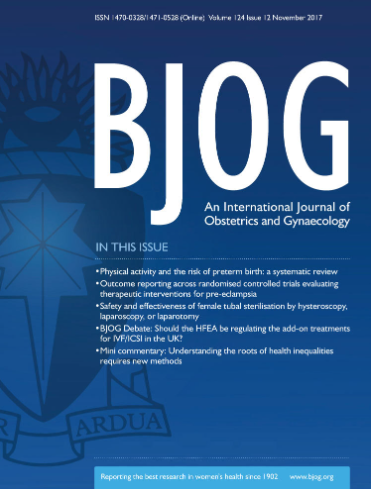Urine high-risk human papillomavirus testing as an alternative to routine cervical screening: A comparative diagnostic accuracy study of two urine collection devices using a randomised study design trial
Abstract
Objective
To evaluate the sensitivity of human papillomavirus (HPV) tested urine to detect high-grade cervical precancer (cervical intraepithelial neoplasia grade 2+ [CIN2+]) using two urine collection devices.
Design
Randomised controlled trial.
Setting
St Mary's Hospital, Manchester, UK.
Population
Colposcopy attendees with abnormal cervical screening; a total of 480 participants were randomised. Matched urine and cervical samples were available for 235 and 230 participants using a first-void urine (FVU)-collection device and standard pot, respectively.
Methods
Urine was self-collected and mixed with preservative – randomised 1:1 to FVU-collection device (Novosanis Colli-pee® 10 mL with urine conservation medium [UCM]) or standard pot. Matched clinician-collected cervical samples were taken before colposcopy. HPV testing used Roche cobas® 8800. A questionnaire evaluated urine self-sampling acceptability.
Main outcome measures
The primary outcome measured sensitivity of HPV-tested urine (FVU-collection device and standard pot) for CIN2+ detection. Secondary outcomes compared HPV-tested cervical and urine samples for CIN2+ and evaluated the acceptability of urine self-sampling.
Results
Urine HPV test sensitivity for CIN2+ was higher with the FVU-collection device (90.3%, 95% CI 83.7%–94.9%, 112/124) than the standard pot (73.4%, 95% CI 64.7%–80.9%, 91/124, p = 0.0005). The relative sensitivity of FVU-device-collected urine was 0.92 (95% CI 0.87–0.97, pMcN = 0.004) compared with cervical, considering that all women were referred after a positive cervical HPV test. Urine-based sampling was acceptable to colposcopy attendees.
Conclusions
Testing of FVU-device-collected urine for HPV was superior to standard-pot-collected urine in colposcopy attendees and has promising sensitivity for CIN2+ detection. General population HPV testing of FVU-device-collected urine will establish its clinical performance and acceptability as an alternative to routine cervical screening.


 求助内容:
求助内容: 应助结果提醒方式:
应助结果提醒方式:


